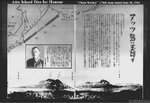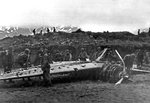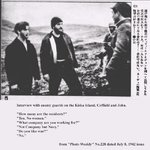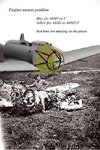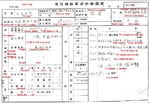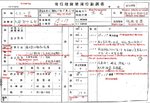Navigation
Install the app
How to install the app on iOS
Follow along with the video below to see how to install our site as a web app on your home screen.
Note: This feature may not be available in some browsers.
More options
You are using an out of date browser. It may not display this or other websites correctly.
You should upgrade or use an alternative browser.
You should upgrade or use an alternative browser.
Japenese airflield on Attu island?
- Thread starter bigZ
- Start date
Ad: This forum contains affiliate links to products on Amazon and eBay. More information in Terms and rules
More options
Who Replied?evangilder
"Shooter"
I read about an unfinished airfield on Attu, but it wasn't clear if the airfield was started by the US or by the Japanese. It also wasn't clear whether or not it ever got finished.
Attu--Reading 1Attu remained unoccupied until the end of October, when fresh troops, including the 303rd Independent Infantry Battalion, arrived from Japan. In April 1943 Col. Yasuyo Yamasaki came by submarine and took command of Attu's growing defenses and partially completed airfield. Despite some increase in American air attacks from newly constructed forward bases (Adak, September 1942; Amchitka, February 1943) and stepped-up American naval activity, Japan succeeded in reinforcing its Aleutian outposts with troops, armament, and supplies until March 1943.
- Thread starter
- #4
Found out their was an incomplete Japanese airfield. For more info:-
USN Combat Narrative: The Aleutians Campaign
USN Combat Narrative: The Aleutians Campaign
evangilder
"Shooter"
I believe once the Americans retook the island, they found the unfinished airfield unacceptable, and built a different one elsewhere on the island.
I believe once the Americans retook the island, they found the unfinished airfield unacceptable, and built a different one elsewhere on the island.
Was that the one where they filled in the bay and built an airfield on top of it or did that happen on Kiska?
daveT
Senior Airman
The Japanese built airstrips on both Attu and Kiska but never got either operational, never based landplanes either place. The vast majority, essentially all, air action in the Aleutians was v Japanese floatplanes and flying boats flying from Kiska. Initially a detachments of the Toko Air Group with Type 97 Flying Boats (later called Mavis, but the US wasn't using those codenames yet when the Aluetian campaign began), Type 0 Recon Seaplanes ('Jake') and Type 2 Float Fighters ('Rufe'). The Flying Boats were too vulnerable to air attacks and weather, and for most of the campaign the opposition was a mixture of Type 0 Recon, and Type 2 Float Fighter, latter being the more dangerous of course, but with limited numbers and no landplane fighters, the Japanese force was at a severe disadvantage once the US established an airfield at Adak, putting Kiska within P-39/40 range and within more practical P-38 range than the extreme range missions flown from the eastern Aleutians, then extinguished completely once the US established a base at Amchitka at short range even for P-39/40's.
Attu, being the further west, was mainly a staging base for the Japanese as far as delivering floatplanes by sea and having them fly on to Kiska. The US invaded Attu first to further cut off Kiska, but by that time there were no more operational Japanese floatplanes in the Aleutians, land based Type 1 bombers from the Kuriles did attempt to attack the Attu invasion fleet though. Of course by the time Kiska was invaded, the Japanese were gone, evacuated, which some Allied airmen suspected because nobody was shooting back at them in the final days, but wasn't certainly found out until the landing.
Joe
Attu, being the further west, was mainly a staging base for the Japanese as far as delivering floatplanes by sea and having them fly on to Kiska. The US invaded Attu first to further cut off Kiska, but by that time there were no more operational Japanese floatplanes in the Aleutians, land based Type 1 bombers from the Kuriles did attempt to attack the Attu invasion fleet though. Of course by the time Kiska was invaded, the Japanese were gone, evacuated, which some Allied airmen suspected because nobody was shooting back at them in the final days, but wasn't certainly found out until the landing.
Joe
It is true the Japanese Army or Navy Air Forces had no land-based aircraft in the Aleutians. H6K flying boats flew briefly from Kiska but a combination of weather and vulnerability to attack meant they were soon withdrawn. The A6M2-N floatplane fighters had limited success and suffered from exposure to harsh Arctic weather. The airfield on Attu was never completed to allow operations during the time the Japanese were in the Aleutians.
The Japanese seaplane base at Kiska in the Aleutians:
Page 1 - Footnote.com
Attu island with the airstrip known as Casco NAS at right:
Page 1 - Footnote.com
Darryl
The Japanese seaplane base at Kiska in the Aleutians:
Page 1 - Footnote.com
Attu island with the airstrip known as Casco NAS at right:
Page 1 - Footnote.com
Darryl
Hello Shinpachi san,
I'm very interested in operations of Japanese Air Force in the Aleutians.
The photo DaveT posted of the upturned SuiSen (Rufe) floatplane wreck is what is often reported as "Zero on beach" in various US military histories. Here is another photo showing the location as Holtz bay.

Credit: US Army Signal Corps
But I also have a photo of what appears to be a land-based Zero-sen fighter wreck which I believe crashed on Attu.

Credit: eBay auctions
Could a Zero-sen from one of the Carrier air groups have crashed on Attu at some time? (Other than Koga's Zero in 1942)
I'm very interested in operations of Japanese Air Force in the Aleutians.
The photo DaveT posted of the upturned SuiSen (Rufe) floatplane wreck is what is often reported as "Zero on beach" in various US military histories. Here is another photo showing the location as Holtz bay.
Credit: US Army Signal Corps
But I also have a photo of what appears to be a land-based Zero-sen fighter wreck which I believe crashed on Attu.
Credit: eBay auctions
Could a Zero-sen from one of the Carrier air groups have crashed on Attu at some time? (Other than Koga's Zero in 1942)
Thank-you Shinpachi san,
Yes, there was a G4M Rikko (Betty) unit at Paramushir that carried out bombing raids in the Aleutians - but only small number due to extreme weather. I suppose A6M Zero-sen would fly as escort for these missions.
I will have to dig very deep to find information about these air operations from the Kuril islands - Paramushir and Shumushu islands.
There is information about US missions over Shumushu in 1944 when A6M and Ki-43 fighters wre encountered, but nothing about Japanese fighters over the Aleutians other than the raids from the carrier Ryujo in June 1942.
This is a mystery that I will attempt to find more information on.
Of course , it could be that this wreck is not a a Zero-sen but a SuiSen floatplane. The photo does not provide conclusive proof either way.
Yes, there was a G4M Rikko (Betty) unit at Paramushir that carried out bombing raids in the Aleutians - but only small number due to extreme weather. I suppose A6M Zero-sen would fly as escort for these missions.
I will have to dig very deep to find information about these air operations from the Kuril islands - Paramushir and Shumushu islands.
There is information about US missions over Shumushu in 1944 when A6M and Ki-43 fighters wre encountered, but nothing about Japanese fighters over the Aleutians other than the raids from the carrier Ryujo in June 1942.
This is a mystery that I will attempt to find more information on.
Of course , it could be that this wreck is not a a Zero-sen but a SuiSen floatplane. The photo does not provide conclusive proof either way.
1. The 752th Air Group conducted a few raids w/ Type 1 Land Attack Planes (Betty) from Paramushiro to Attu. No Japanese source I know mentions fighter escort of those raids, and the flight intercepted by P-38's, May 20 1943, was definitely not escorted by fighters. Paramushiro to Attu was around 800 land miles one-way, farther than any known Zero operation by a considerable margin.1. Yes, there was a G4M Rikko (Betty) unit at Paramushir that carried out bombing raids in the Aleutians - but only small number due to extreme weather. I suppose A6M Zero-sen would fly as escort for these missions.
2. Of course , it could be that this wreck is not a a Zero-sen but a SuiSen floatplane. The photo does not provide conclusive proof either way.
2. What makes you think the a/c in the picture is a Zero? I can't tell given the advanced state of decay. Even if the engine mount etc. is distinctly that of a Zero, it would seem more likely it was a Type 2 Float Fighter (or Suisen, aka Rufe or float Zero) with the floats ripped off (perhaps cannibalized for parts along with the engine). That type was known to be at Attu. And if the engine mount and shape is not particularly that of Zero, seems it could be another type of stripped floatplane.
Joe
Hi Joe,
Thanks for those comments. You are right that it is very unlikely that Zero-sen flew escort for bombing raids on Attu. Only A6M2 Model 21 Zero-sen had sufficient range (1900 st. miles) to reach Attu and 203rd kokutai would have had later models (A6M5) in 1944.
You say there are no records you know of and I can find no mention of a Zero-sen fighter shoot down over Attu or elsewhere in the Aleutians (except for Koga's carrier-based A6M2 at Akutan). There are a number of recorded shoot downs of SuiSen float fighters there and a number were wrecked on shore during storms.
I was tempted to bid on this auction, to see if there was any detail which would support recognition either way. However, it is obvious if you can't see landing gear or floats in a photo then conclusive identification for this type is impossible.
I will have to put this one down as 'A6M2-N floatplane wreck' on balance of probability.
Thanks for those comments. You are right that it is very unlikely that Zero-sen flew escort for bombing raids on Attu. Only A6M2 Model 21 Zero-sen had sufficient range (1900 st. miles) to reach Attu and 203rd kokutai would have had later models (A6M5) in 1944.
You say there are no records you know of and I can find no mention of a Zero-sen fighter shoot down over Attu or elsewhere in the Aleutians (except for Koga's carrier-based A6M2 at Akutan). There are a number of recorded shoot downs of SuiSen float fighters there and a number were wrecked on shore during storms.
I was tempted to bid on this auction, to see if there was any detail which would support recognition either way. However, it is obvious if you can't see landing gear or floats in a photo then conclusive identification for this type is impossible.
I will have to put this one down as 'A6M2-N floatplane wreck' on balance of probability.
Hi mates guys!
I have reached a conclusion on my CG work that the aircraft on the photo introduced by mokyme would be A6M2 or A6M2-N. The engine mount of A6M2(or -N)was located 210mm forward than A6M3 or 5.
I have checked other models such as D3A, B5N, B6N and F1N(Pete) of the single engine plane which were thought deployed in the northern Kuril (or Attu) but the none wing+engine positionings are alike the photo except the Zero family.
Thinking normally, it would be A6M2-N.
Thanks.
I have reached a conclusion on my CG work that the aircraft on the photo introduced by mokyme would be A6M2 or A6M2-N. The engine mount of A6M2(or -N)was located 210mm forward than A6M3 or 5.
I have checked other models such as D3A, B5N, B6N and F1N(Pete) of the single engine plane which were thought deployed in the northern Kuril (or Attu) but the none wing+engine positionings are alike the photo except the Zero family.
Thinking normally, it would be A6M2-N.
Thanks.
Attachments
Captain Goro Nonaka was, later as Major, a commander for the first attack by 721 Ku, so called Jinrai(Thunder God) unit.
He was suspicious and denying suicide attack.
On March 21 1945, he and his unit of 18 G4Ms were ordered to carry and drop 15 new type bombs namely 'Ohka' on the enemy fleet offshore Okinawa.
Before sortie, he is said told his boys "OK, let's go (to the heaven) together".
Attached image shows his last takeoff.
This mission is said filmed by a U.S. gun camera as you often see on YouTube etc.
He was suspicious and denying suicide attack.
On March 21 1945, he and his unit of 18 G4Ms were ordered to carry and drop 15 new type bombs namely 'Ohka' on the enemy fleet offshore Okinawa.
Before sortie, he is said told his boys "OK, let's go (to the heaven) together".
Attached image shows his last takeoff.
This mission is said filmed by a U.S. gun camera as you often see on YouTube etc.
Attachments
Users who are viewing this thread
Total: 1 (members: 0, guests: 1)

